东四共享际
——酱油厂更新,北京,中国
设计:北京大观建筑设计
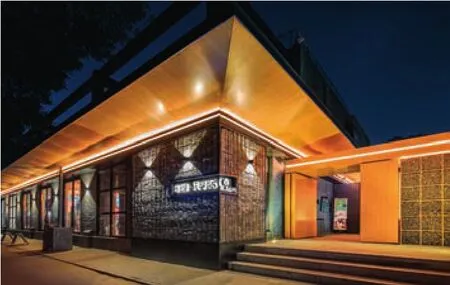
2 外景/Exterior view
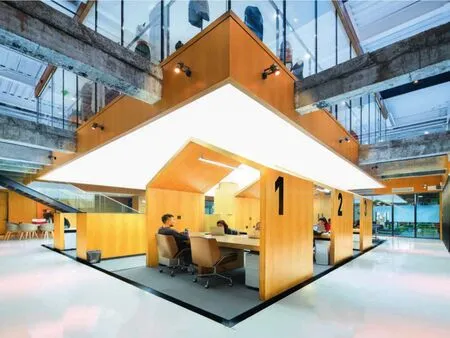

4.5 浮游之岛下层/Under the floating island
共享际位于北京二环里的胡同区域,项目本身是一个废弃的酱油厂,周边被北京老城区典型的灰色坡屋顶瓦房老建筑包围,沿着一条很窄的胡同巷子,不远处是段祺瑞总理府,而项目隔壁就是一些在这里居住了几十年的老居民。共享际是在一个老社区里的创新的空间产品,共享际的产品团队和设计建筑事务所共同研究人对空间、社群对空间的生活需求属性,来提供设计输入条件。业主运营团队和设计师的深层次全面沟通保证了产品内容和日后的互动关系与空间完美的结合。
共享际整体面积虽然比较小,但是功能业态比较齐全,含有餐饮、书店、超市、办公和公寓等。
项目的设计理念来源于四合院的院落围合文化,通过切割楼板形成的“浮游之岛”,用现代手法来阐述传统建筑文化观点。而这种内部空间切割出一个通透的中心展示空间也成为了支撑整个项目最大的特点,一个月100场活动也让“浮游之岛”成为使用效率最高的区域。
改造之前的建筑由于每层都是封闭的,所以内部光线并不理想,并且视觉效果比较单调。所以在改造设计中首先通过切除每层之间的楼板,让从地下一层到屋顶所有楼层都联通,从屋顶引入光线,增加了空间的层次感。同时天井又是一个很好的广告或艺术装置展示区,为整个空间增加了灵活性及创造性。□
项目信息/Credits and Data
位置/Location: 中国北京东四九条88号/No.88, Dongsi 9 Lane, Beijing, China
客户/Client: 5Lmeet
设计团队/Design Team: 申江海,任晓伟,许云飞/SHEN Jianghai, REN Xiaowei, XU Yunfei
面积/Area: 2200m2
摄影/Photos: 优客工厂五透/Wutou
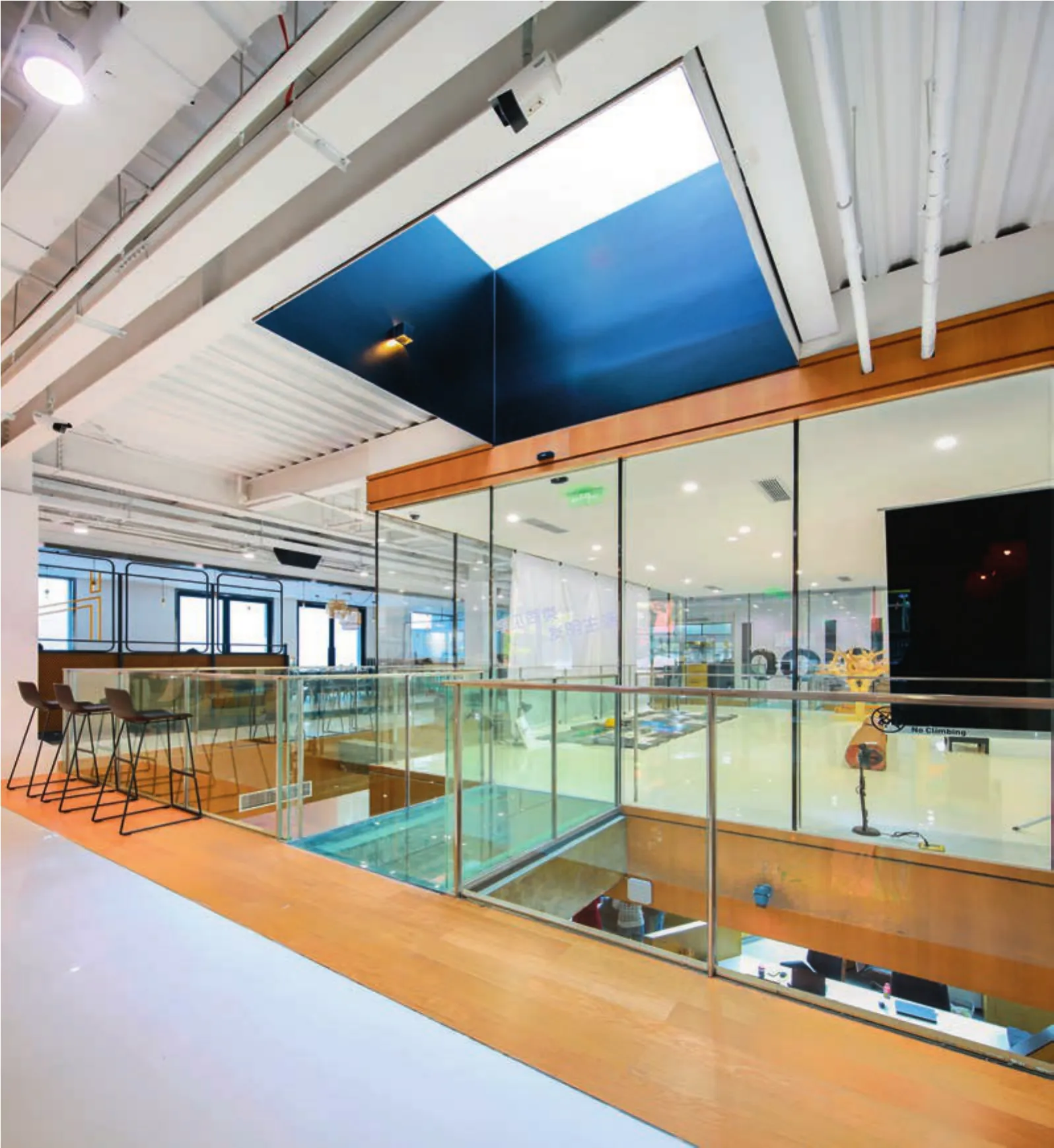
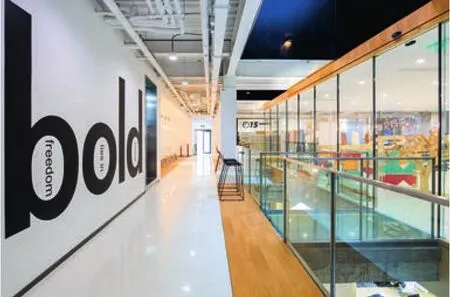
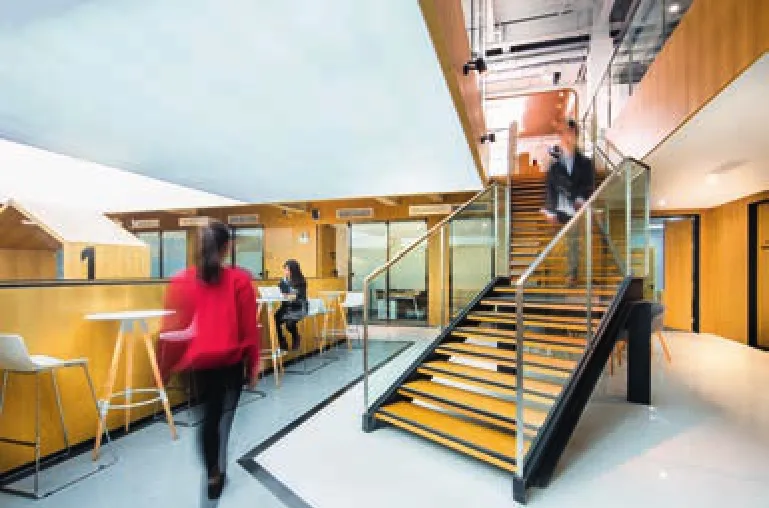
6-8 内景/Interior views
5Lmeet is located in a narrow Hutong alleyway within Second Ring Road in Beijing. The project itself was an abandoned soy sauce factory surrounded by the old grey-tiled buildings. It is not far from the historical Duan Qirui Prime Minister's Office, and next door is the old residents existing for decades. 5Lmeet is an innovative space in an old community. The client and the design firm worked together to study the social and spatial requirements of activities space to provide design input conditions. Operating team and designers’in-depth communication ensured that the project content and future interaction with the perfect combination of space.
5Lmeet includes restaurants, bookstore, selfservice shop, offices and apartments although the area is not large.
The design concept of the project is originated from enclosing culture of traditional Chinese courtyard. The "floating island" is formed by cutting the floor, the traditional view of architectural culture is expounded with modern technique. This transparent display space in the internal space becomes the most important feature. "Floating island" becomes the most efficient use of the region with a hundred events every month.
The project space is very cramped and dark before renovation. So firstly, cutting some large holes to connect different floors and allow sunlight to come in from roof, making internal space more rich. At the same time the patio is also a good advertising and art installation display area, make space more flexible and creative.□
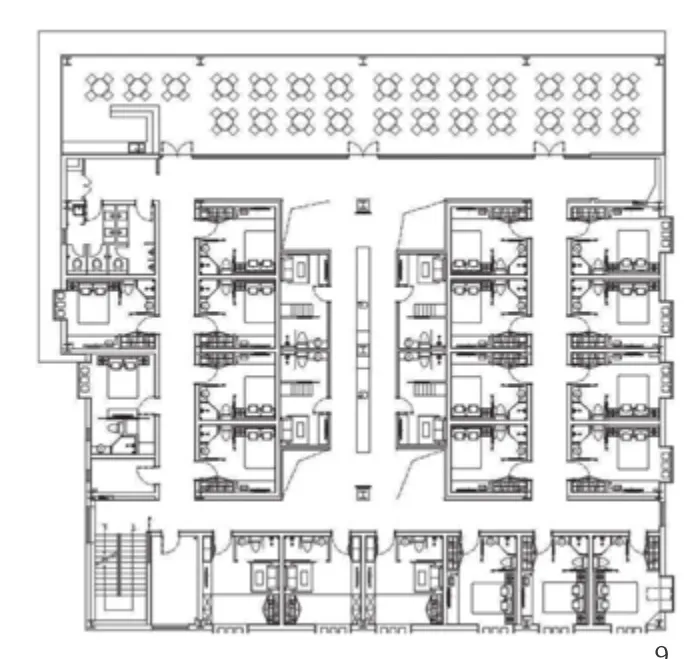
9 二层平面/Floor 1 plan
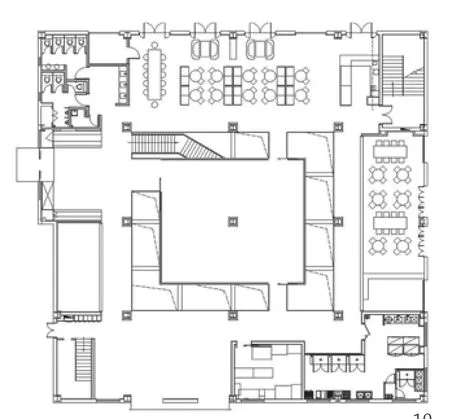
10 首层平面/Ground floor plan
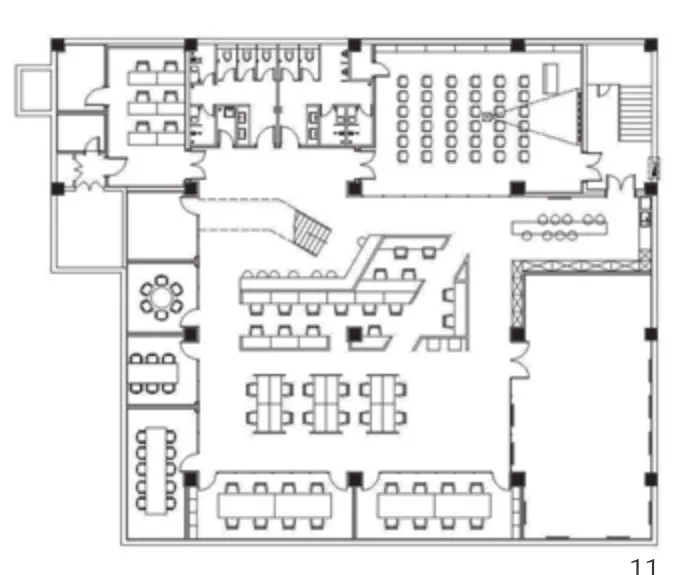
11 地下一层平面/Floor B1 plan
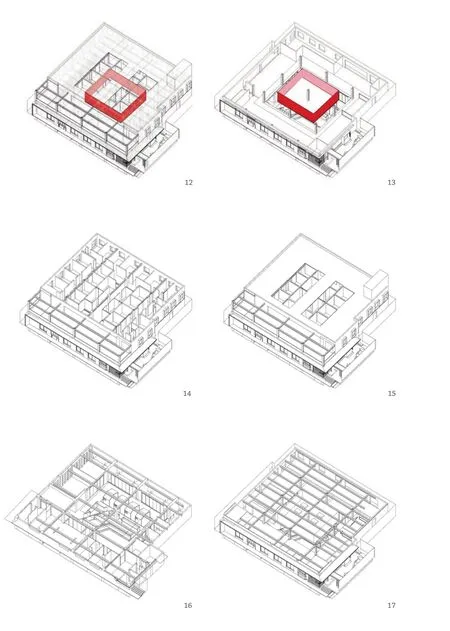
12-17 图示/Diagrams

19 吧台/Bar
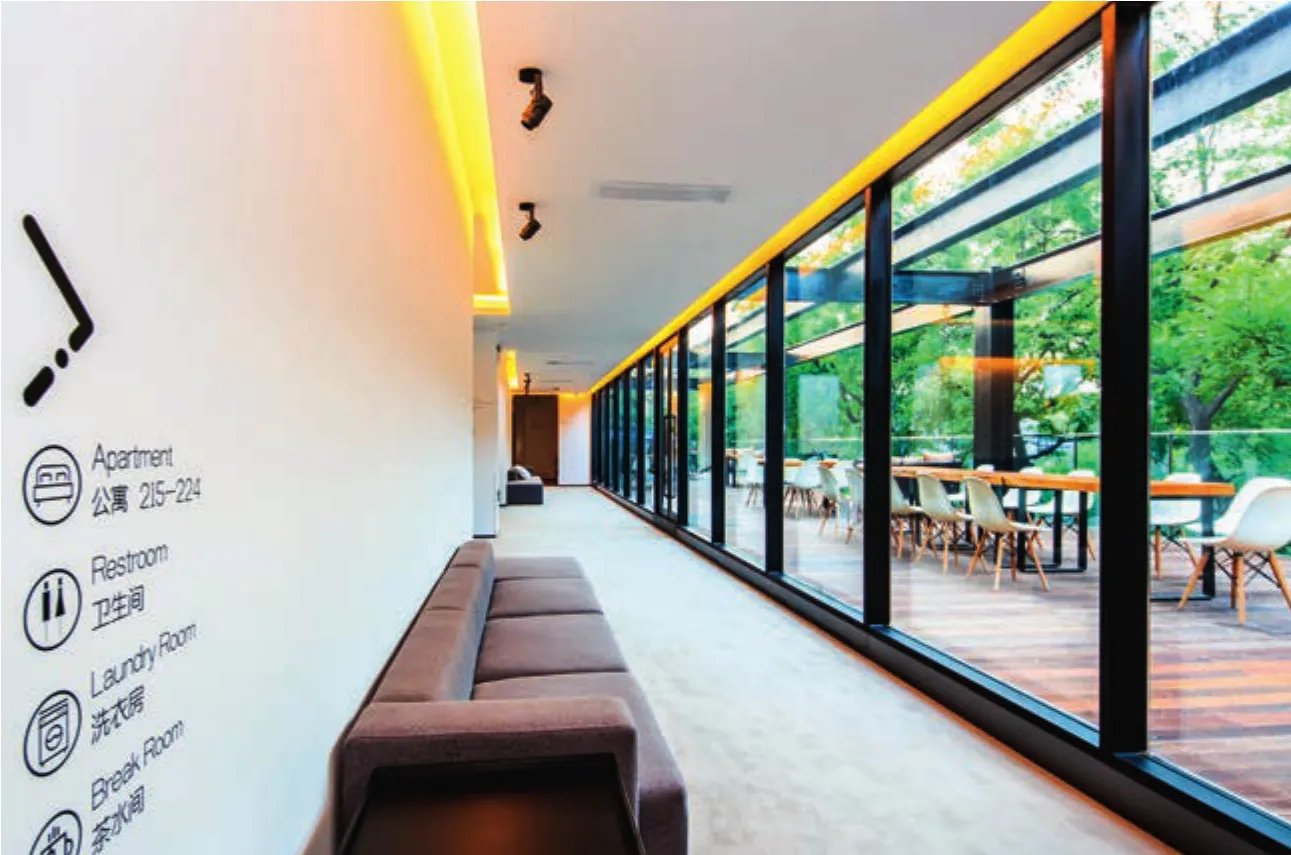
20 公寓区走廊/Corridor of apartment
WA:在这个项目中,设计发挥了什么作用?
大观:这个项目的改造前身是一个老酱油厂,2400m2的原始状态非常粗野。设计中除了从空间的角度进行改造优化,我们更关注设计对于主题功能的强化和对“共享空间”运营氛围的营造。通过中心式的布局,并把共享的中岛空间以体量的方式贯穿楼层,使人们意识到这是一种全新的业态,并且它的布局逻辑可以被直观地识别。共享空间的理念通过设计直接被传达到游客的行为上。
WA:设计中最有创意和最具吸引力的部分是什么?
大观:从形式上看,浮游之岛和星空房是比较特别的两个点,通过楼板的贯穿,强化负空间的利用,并且在某种程度上来说,这种利用方式是反直觉的。但这些都是围绕着整个建筑的使用方式而来——共享。我们力图把整个项目打造成一个充满了信任和交流的公共空间,这种对使用方式的设想不断引导着空间的设计。
WA:设计过程中最大的困难是什么?
大观:难点在于设计中的不断自我否定。这个方案并不是有严格限制的任务书设计,而是一个成长式的方案,在我们探索未来共享社区场景的过程中,不断的丰富输入条件,随时根据空间效果在设计中进行反馈,又根据新的空间去反推未来的业态,这种因全新业态而不断自我否定又自我尝试的过程,是本设计中最大的难点。
WA:使用者的反馈如何?
大观:业主方和顾客都给出了一致的好评,尤其是中心的浮游之岛,每个月的活动场次可达到近100场,这得益于空间逻辑的基础和对运营良好的设想。有人说这个设计就像是超级玩具一样,令人惊喜而且高效。
WA:这个项目是如何改善使用者的工作状态的?
大观:信任是未来社会的必需品。对于使用者,我们最乐意看到的改变就是“信任”。通过对空间场景的创造,把人们从格子间和卧室中抽身出来,更多的融入公共使用空间当中去,这在空间效率最大化的同时,也为信任打下了基石。□
WA: What is the role of design in this project?
DAGA: Before being renovated as part of our project, this place was an old soy sauce factory – the original plant of 2400 square metres was in absolutely neglected conditions. In the design phase, besides thinking of an optimised renovation from a spatial point of view, we have paid close attention to how design could strengthen the thematic effects of the space and create a fully operative atmosphere in a shared environment.
The central distribution, as well as the shared central island space cutting across different floors as a dimensional volume,immediately convinces the viewer that this is a completely new type of business activity. The logic behind the spatial distribution is quite straightforward and can be easily grasped by the observer. Through design, the principles of shared space can be directly conveyed to the visitors and their actions.
WA: What is the most creative and attractive solution?
DAGA: From a formal point of view, the floating island and the starry-sky room are two extremely particular focal points: thanks to their design cutting through the floors, they emphasise the use of the negative space –this type of design modality, to a certain extent, is quite counterintuitive.
However, all these elements are conceived for and evolved around the main purpose of this architectural space – i.e. sharing.
We have done our best to take this project as an opportunity to create a public space full of trust and communication. This underlying idea of ‘sharing' has constantly guided the design concept of this project.
WA: What was the most difficult part in the process of design?
DAGA: The most difficult part undoubtedly was the constant negation of the self during the design process. Actually, our project brief never presented strict limits on design choices: on the contrary, it was an ever-evolving project. In our investigation of future sharing communities' scenarios, all kinds of constraints have been integrated during the making process, every time adapting the design according to its spatial effect, as well as drawing inspiration for future business activities based on newly-discovered spatial possibilities. This process of constant selfnegation and self-discovery through investigation of brand-new businesses has been undoubtedly the greatest difficulty encountered in this design project.
WA: What is the feedback from users?
DAGA: From both the client side and the user one, we have received similar positive feedback, in particular with respect to the central floating island.Every month, almost 100 events take place here,highly benefitting from the logical distribution of space and the optimisation of its spatial functionality. Some people even say that our design can be compared to a super toy, as it goes beyond the users' expectations, visually surprising them while being high-functional.
WA: How did this project improve the users' work?
DAGA: Trust is going to be an indispensable good in our future society. And in fact, with respect to the users, a change we have gladly witnessed is exactly about "trust". Through the creation of new spatial scenarios, we have taken people out of their work cubicles and private bed-rooms and had them integrate into public shared spaces: in this way, we not only have maximised the functional efficiency of the space, but also helped build a solid basis of trust among its users.□(Translated by Milena Lazzaretti)

21-23 公寓/Apartments

